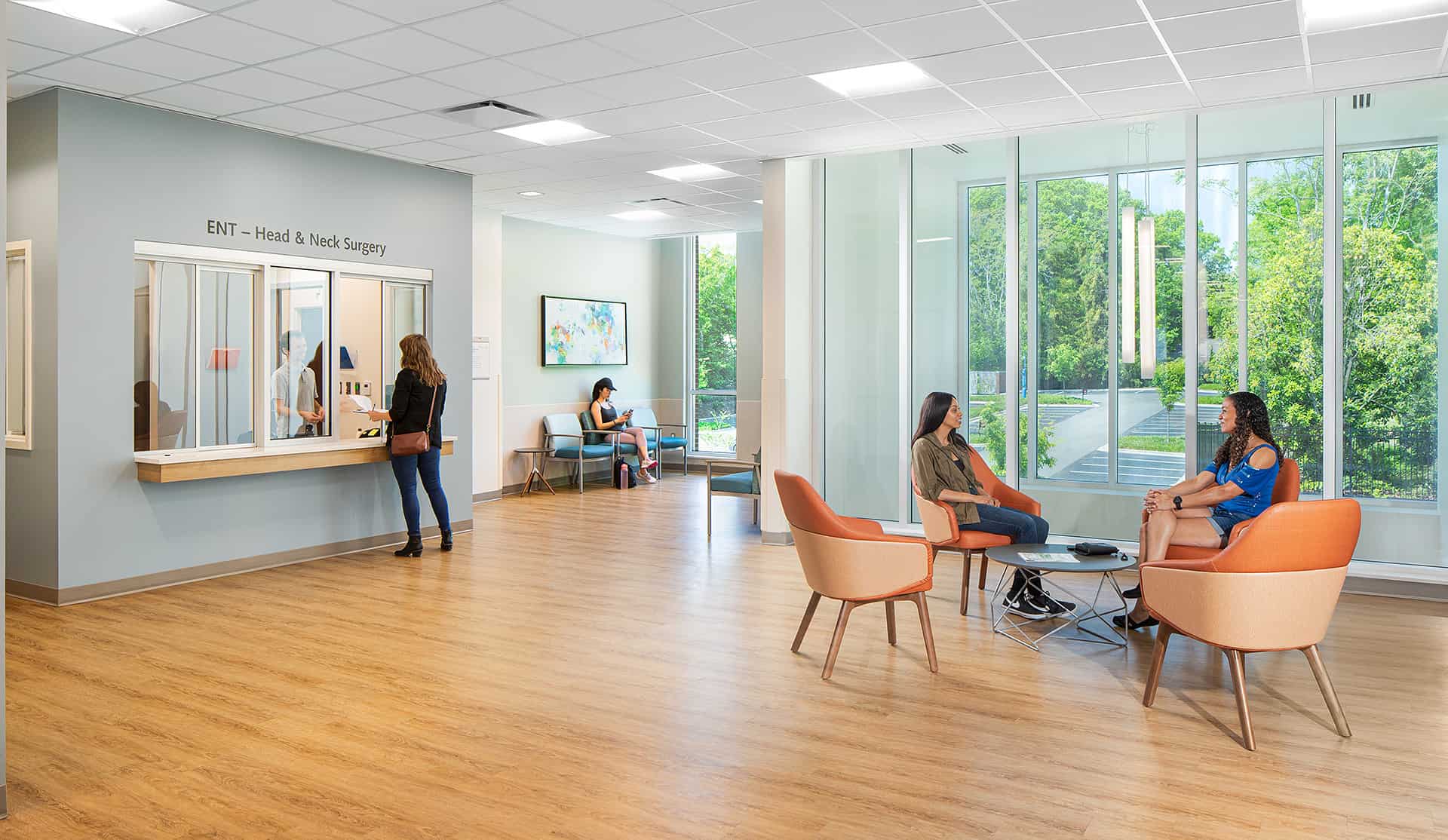Whether you’re a patient, provider or caregiver, navigating today’s healthcare system is challenging. Fortunately, advances in technology help minimize obstacles small and large, from improving wayfinding and accessing healthcare records to streamlining communication and lowering healthcare costs. By outfitting themselves to support enhanced technology, healthcare entities can better personalize the patient experience, improve operational efficiency and eliminate barriers to access.
Patient Personalization
As the push for patient-centered healthcare continues to grow, healthcare organizations are looking for opportunities to personalize the patient experience. While mobile apps and Bluetooth capabilities are familiar and relatively commonplace, their meaningful application can help deliver customized, holistic care across the patient journey.
Patients have different needs and preferences depending on who they are and where they are within their care journey. For example, let’s say you’re a first-time patient who speaks English as a second language. You may feel more confident completing paperwork in your native language. In turn, the front-desk staff may have fewer questions from you to address and can process your paperwork more quickly. A patient personalization as straightforward as language can make the difference between a comfortable or frustrating experience.
Software-based patient interfaces and Bluetooth technologies help deliver this kind of high-quality, personalized patient care both in and out of the clinic. Many patient-facing mobile applications offer interactive capabilities like appointment scheduling, pre-appointment check-in, prescription refills, direct communication with physicians, telemedicine appointments and more. This kind of streamlined communication makes access to information like healthcare records easier for both patients and providers.
In the clinic, Bluetooth technologies can personalize exam rooms by recognizing special worn devices, such as a Bluetooth-enabled wristband or lanyard or a wearable fitness tracker like Apple Watch or Fitbit. The ability to adjust features like digital display boards and lighting depending on who is in the exam room can enhance the patient experience without compromising functionality. Moreover, wearable smart devices help personalize wellness to encourage healthier habits.
Operational Efficiency
How many team members do you need on the night shift? How long does the typical exam visit take? When does your equipment need maintenance?
Data is the name of the game in increasing operational efficiency, as greater access to information allows for more informed decision-making. By employing technologies that gather, record and share data, healthcare entities can better anticipate patient and provider needs.
For facilities that provide critical care, speed is of the utmost importance. Robust data insights can help improve patient care timeliness and efficient clinic layout design. For example, tracking how long it takes to complete each stage of a healthcare visit, from check-in to check-out, can give us insight into potential design bottlenecks that impact patient flow. Similarly, understanding healthcare providers’ movements throughout the clinic and time spent in exam rooms informs scheduling and potential resource gaps. In a recent study that tracked nurses’ steps and location mapping during an 11-hour shift, nurses spent an average of four-and-a-half hours working and engaging with patients. The remaining six-and-a-half hours were spent finding equipment, completing administrative work and walking to and from storage closets. These types of insights provide opportunities to improve efficiency and deliver high-quality care as quickly and consistently as possible.
In addition to streamlining the delivery of care, data insights can help inform facility operations to anticipate and even minimize maintenance costs. Routine maintenance keeps your equipment in good working order until the unexpected occurs. An unexpected equipment or software failure can cause costly slowdowns and require corrective maintenance. With deeper insights into your facility’s everyday operations, like airflow, for example, you can better predict equipment breakdown and prevent it before it happens. This predictive maintenance ensures your equipment is functioning properly and as cost-effectively as possible.
Healthcare Accessibility
Increasing healthcare access continues to be a top priority for healthcare providers across the nation. Locating healthcare, speed to service and affordability are all major considerations patients make when choosing a healthcare provider.
For example, if you have health insurance, you likely want to visit a care provider who is covered by your insurance plan. Similarly, if you suffer an emergent injury like a broken bone, you want to find the nearest emergency room or urgent care with the shortest wait time. While these examples seem straightforward, healthcare entities must be forward-thinking to anticipate what technology they will need to deliver seamless patient experiences. For example, the COVID-19 pandemic advanced the use of telemedicine by several years. Organizations that had already integrated telemedicine into their healthcare offerings were better equipped to navigate this shift in healthcare deliverability.
Moreover, socioeconomic factors play a significant role in healthcare accessibility. When addressing access to healthcare, it’s critical to consider other major social determinants of health that also contribute to health disparities. These factors include poverty, lack of education, stigma and racism, as noted by the Center for Disease Control (CDC). While gaps in healthcare access are multifaceted, advancing technologies have immense potential to address them.
As technology touches all parts of our healthcare systems, we must remain mindful of the opportunities to improve access to high-quality healthcare for all. Digital tools can help improve access to reliable, timely health information, streamline clinic processes and anticipate supply or staff shortages. From large-scale resource tracking to everyday patient interactions, technology has the power to enhance the quality of the overall healthcare experience for patients, providers and caregivers alike.
Thanks to Director of Smart Building Technologies David Stephenson for contributing to this article.

